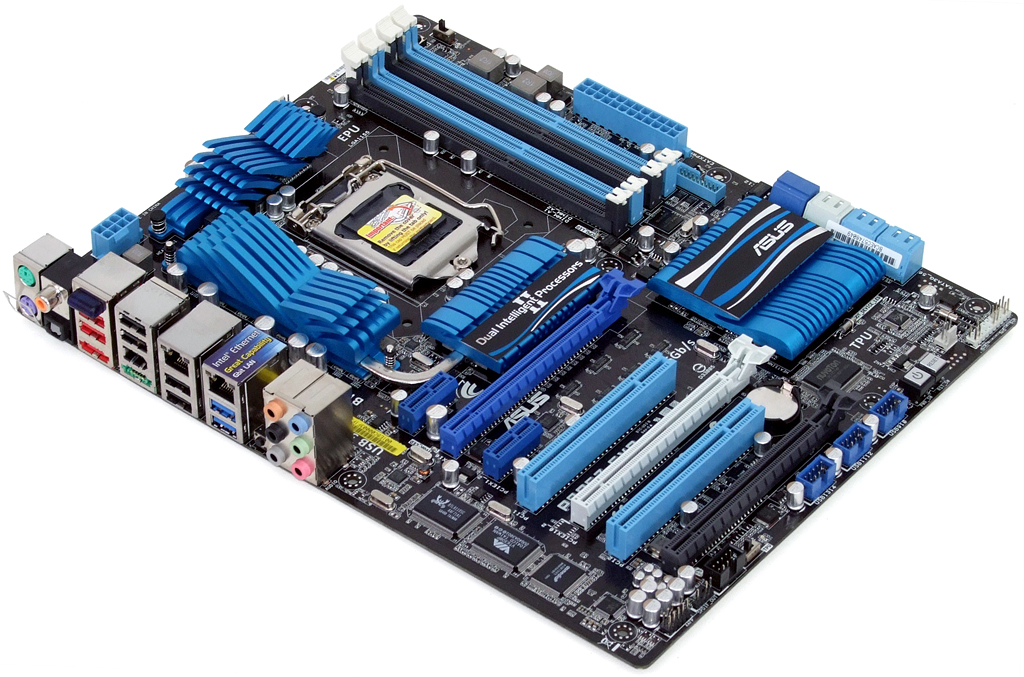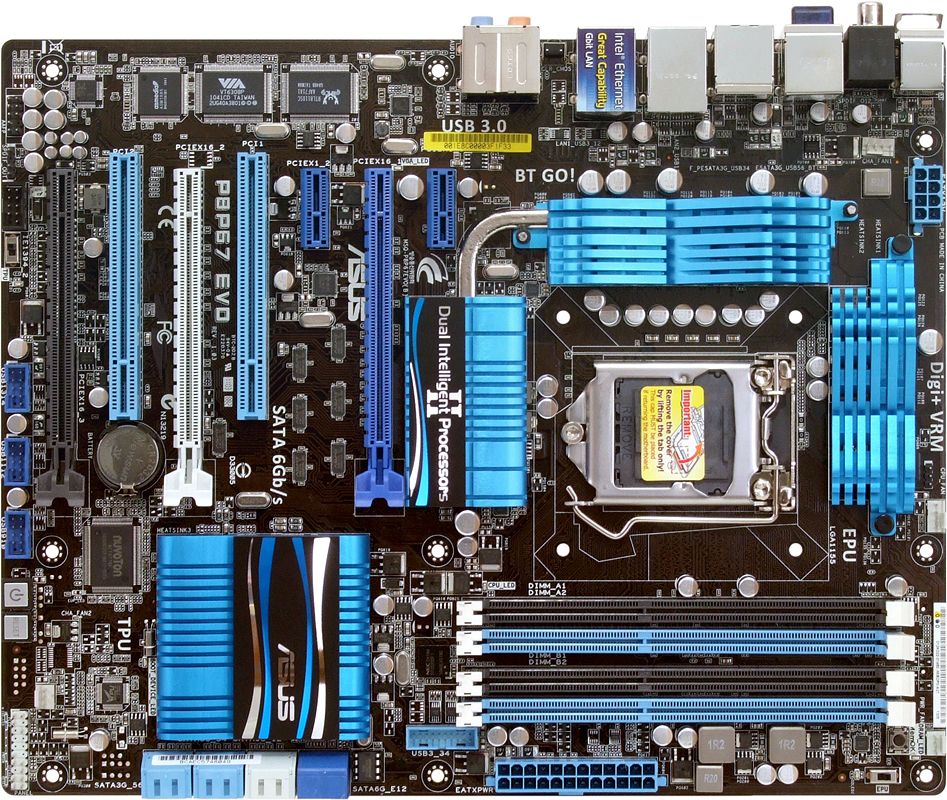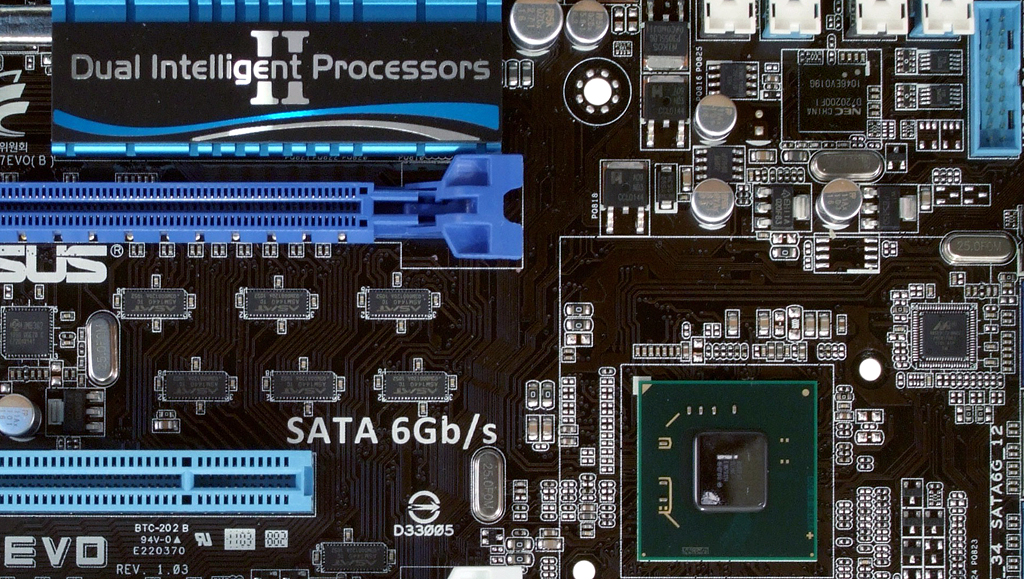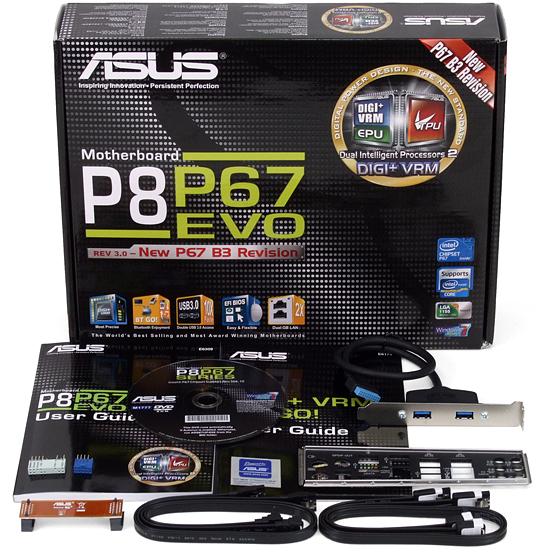High-End P67 Express: Five $200-250 Motherboards
With mainstream boards based on Intel's P67 Express chipset now priced well beyond $150, we reached into the $200-250 range to see what kinds of enhancements high-end buyers could expect just ahead of the anticipated Z68 Express launch.
Asus P8P67 EVO
Similarities between Asus’ samples cause a second case of déjà vu, or in the humorous words of Yogi Berra “déjà vu all over again.” As with its competitor, Asus translates large layout portions from one product onto another, while still using a completely different circuit board.
P8P67 EVO buyers get the same Bluetooth transceiver, the same add-in SATA and eSATA controllers, the same total number of USB 3.0 and USB 2.0 ports, and even the same Intel WG82579V gigabit Ethernet PHY. The EVO has one more PS/2 port, two fewer rear-panel USB 2.0 ports, and one more internal two-port USB 2.0 header.
Quick eyes will notice the big differences between the P8P67 EVO and its Deluxe counterpart right away, since the EVO’s two PCI-based interface controllers are so large. Asus replaces the FireWire and secondary network controllers with PCI versions to reduce the board’s reliance on PCIe, placing both of these on a single ASM1085 PCIe-to-PCI bridge and removing the somewhat-pricey PLX PCIe bridge.
Moving those two controllers to a PCI bus still doesn’t prevent the P8P67 EVO from running out of PCIe pathways, though. Instead, the third PCIe x16-length slot drops from x4 to x1 mode in order to enable the top PCIe x1 slot, eSATA controller, and secondary SATA 6Gb/s controller. And even when that x16 slot is in x1 mode, it steals that lane from the second PCIe x1 slot.
Those are big sacrifices to enable a x4 slot for x8-x8-x4 triple graphics card configurations, but some gamers don’t need more than six internal drives or eSATA. Nevertheless, a less convoluted layout would have at least eliminated the second x1 slot, since it’s always tied to the third x16-slot’s first lane (unusable) and blocked by the graphics coolers of most performance-oriented graphics cards (inaccessible).
The P8P67 EVO includes four internal SATA cables, two of which are rated SATA 6Gb/s-compliant. We consider that the bare minimum for any upper-range motherboard, which means that some of Asus’ competitors don’t even meet our minimum standards in this respect. Builders whose cases lack an internal USB 3.0 front-panel interface will get little benefit from the EVO’s installation kit, since it includes only a slot-panel adapter.
Get Tom's Hardware's best news and in-depth reviews, straight to your inbox.
-
joytech22 So glad I grabbed my P8P67 Deluxe!Reply
It had all the features I was looking for at a low enough price to make it very appealing. -
Crashman rolli59Nice article would have been nice to have a Gigabyte board in there as well.Please tell Gigabyte to produce something for this market!Reply
Tom's Hardware included the UD4 in its $150-200 motherboard roundup, and the UD5 costs more than $250. -
Manos How te hell is it possible that a website like this keeps ignoring my question as in WHY its been for so many months if not year or whatever, that they dont fix this *** and I cant click to submit my comment from IE? How can THIS be the only website with issues with IE? I find it rather sad. Its why i quit commenting instead of being forced to open a different browser for this site which I used to love and respect. Till they started ignoring this issue Ive been pointing out ( and not just me ).Reply
Thank you for the charts tho id love to see one with Maximus IV included x.x ( I edited cause I asked something stupid as in why I dont see it in the chart. Sorry.. Been working all night and no time to read the article. Bits only.And no I obviously hadnt read the title x.x My bad. Happy Easter! -
jerreddredd It would have been nice to see if there is a performance gain in these "high end" boards over a value P67 board.Reply
For an even better article also throw in one of each value rated H67 and H61 boards. ($240 vs $130 vs $70 boards)
-
alidan jerreddreddIt would have been nice to see if there is a performance gain in these "high end" boards over a value P67 board. For an even better article also throw in one of each value rated H67 and H61 boards. ($240 vs $130 vs $70 boards)this, i would love to see how the high end stacks up with the low end. the low may not have as much as the high end, but performance is really all that matters considering we can just get expansion cards for things we dont have.Reply -
Hupiscratch Great article. Now it´s time for the high-end overclocking oriented boards, like the ASUS Maximus IV Extreme.Reply -
memadmax I'm gonna go all out on this chipset when it matures a bit. A cool 5 grand i'm thinking for my next gen build.Reply




